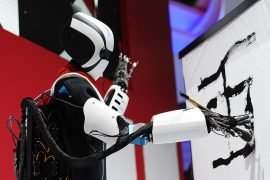
Apparently, what we thought was science fiction is beginning to...
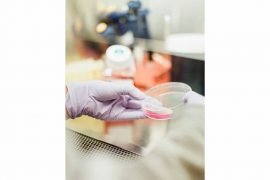
2017 saw the consolidation of three trends: larger rounds of...
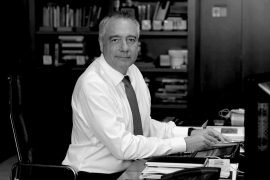
Graduated in Biological Sciences from the Universitat Autònoma de Barcelona...

Would you like to walk around with the Giocconda under...

With 0.1% of the worldwide population, Catalonia produces 1.3% of...

Barcelona has become a desired destination for investors, beyond the...
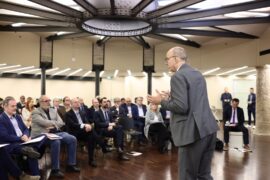
La universidad norteamericana publica un caso de estudio que analiza...
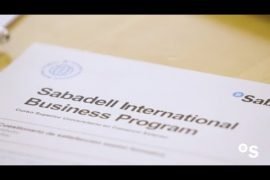
Banco Sabadell, with the collaboration of the University of Barcelona,...
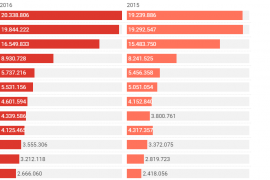
Barcelona, with 20.33 million overnight stays, led in 2016 the...
Everything seems to indicate that agriculture and cattle-raising stand on...

Música clásica sobre la arena de la playa en dos...

The first session of the cycle on the regatta organized...

The hospital's managing director, Manel del Castillo, and the pharmaceutical...

Generalitat y Ayuntamiento impulsarán dos equipamientos de 'Casa de les...

Leticia Beleta, director of Alexion Pharmaceuticals in Spain and Portugal,...

We all have a friend who never leaves the Gràcia...

Barcelona director opts for Best International Film with 'La sociedad...

The hotel and industrial sectors softened the market's decline last...

The technology company, with a workforce of 35 employees and...

“The women of yesteryear were strong and had to fight...
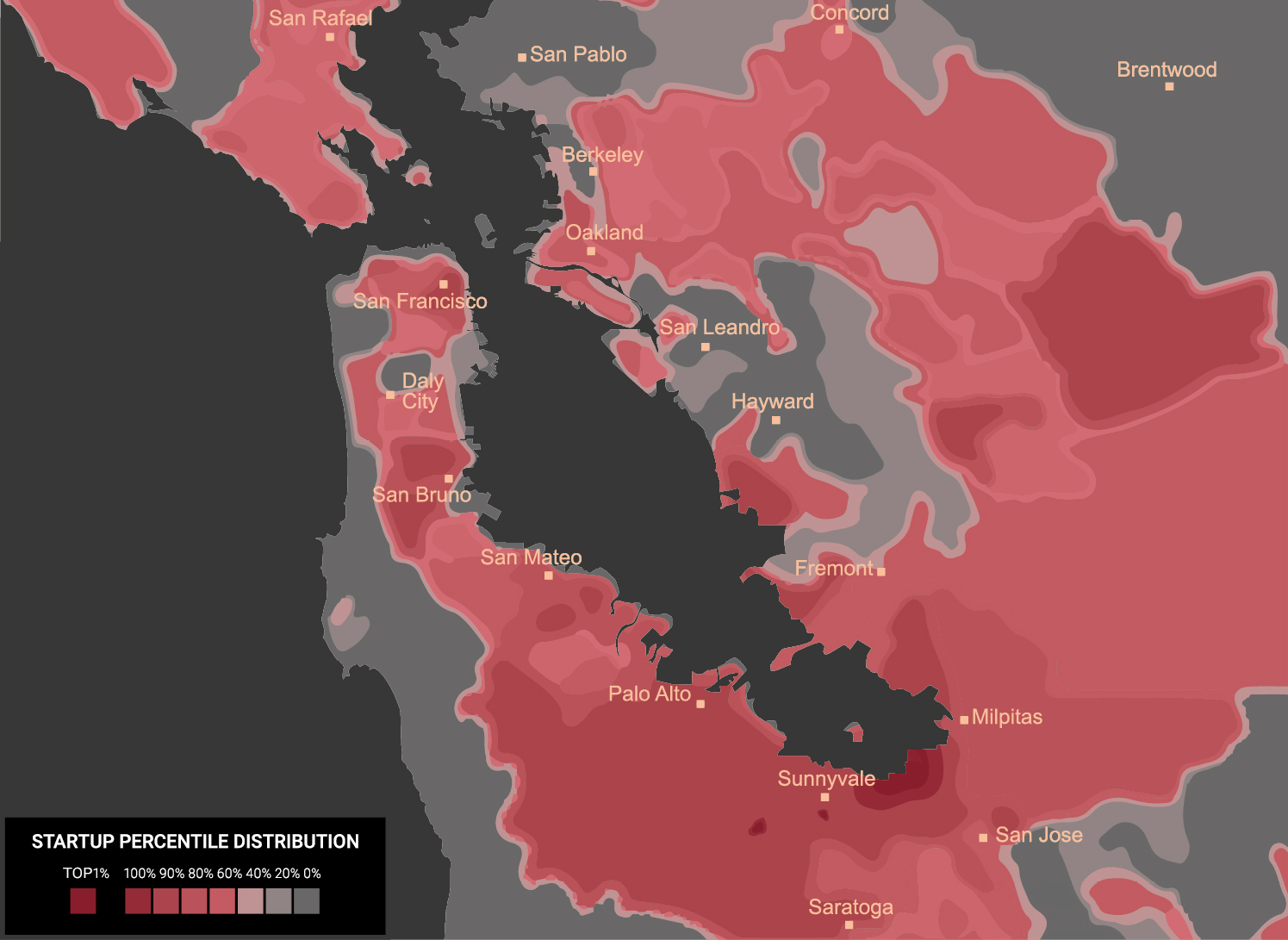
I must admit that the first time I went to Silicon Valley, ten years ago now, I had no idea what it was. This is not a city and its name did not even appear in the maps. It extends from Menlo Park to San José and currently includes the city of San Francisco. Silicon Valley is the headquarters of the best technological businesses in the world such as Facebook, Google, Twitter; home to the most powerful investors; and the cradle of thousands of start-ups aiming to change the world. On walking Silicon Valley for the first time, something changed in my life. It was a new insight, a new way of thinking, understanding businesses, relating and growing professionally. I call it “the entrepreneurial Disney World” because the place reminds me of a theme park, where they give you a map at the gate that indicates each thematic zone totally prepared to make your dreams come true. In Silicon Valley, instead of children chasing illusions, the protagonists are entrepreneurs. It has several thematic zones: investors’ zone: VC zones —venture capitals—, the world’s strongest investors have their premises on Sunhill Road. It represents the largest concentration of investors on the planet and one where most investment operations take place. Another zone is that of knowledge, with Standford University as the Party Queen. It has been of paramount importance in creating an entrepreneurial ecosystem. Following the map, the other zone is that of service-providers, with lawyers, mentors, consultants, business accelerators and incubators, dedicated to helping teams to validate and make business grow by giving them resources, often money. The most popular is Y Combinator. Everything is possible. Another zone is that of the big technological companies. Google is buying an enormous amount of land and housing space in the area. You can visit such corporations as Apple, Yahoo, Sales Force, Twitter, Facebook, the biggest breakthrough companies. They all started as start-ups and, thanks to great ideas, they grew into giants that feed and get fed from this huge ecosystem. Most start-ups aim to become bought by these giants. Workshops and coworkings, with an open plan, collaborative policy, house the 30,000 start-ups on the Valley. In San Francisco there is a district called Mission, under Market Street. This picturesque distrique is full of hipsters, well I would say that the whole of San Francisco and the Valley are hipsters, but it has a special and artistic vein. As it is cheaper living there, no wonder that so many start-ups and entrepreneurs set up shop there and have reconverted one of the poorest districts, although it is still an insecure area. As many as 5.000 start-ups per year are created but 85% die within five years. The other side of the coin is that this is the most difficult market in the world, one of the most expensive, mature and one where only the best win. Silicon Valley does not strike you as an aesthetically beautiful place. Coming from Barcelona, where architecture and history are part of our everyday experience, in Silicon Valley there are only industrial areas, isolated residential districts, and everything is scattered, and has no character. This has none of the charm of San Francisco, specially when the mist shrouds its bridges. Rather, its beauty is hidden inside workshops, university classrooms, cafés and crystal buildings. People from everywhere in the world come to become part of a USA team and Silicon Valley welcomes them with open arms, if they have talent, of course. Innovating and the future are key to this selected and secretive club. Everyone gives incentives to work more and better, to earn your position. Smaller than you would think, this club is only for those who are well connected. Access to this selective club is difficult, although doing networking is easy as there are over one hundred events everyday where you can try to get the adequate contacts. People there are very open, they will listen and help you, but only if you have something new to offer. The day I arrived in Silicon Valley I went straight to Keiretsu Forum’s office in San Francisco, on Market Street. This is a high crystal building amidst the district of finances. People in jeans, casual, relaxed, despite handling million-dollar businesses. I was wearing a more formal outfit. Ten years ago in Spain, it was not common to wear t-shirt and trainers in the office. I started working hard with the members of the team, as I wanted to learn investment methods and strategies of the business angels, private investors who invest their own money on businesses, with a view to getting a return on their investment, and adapt it to the Spanish culture and lifestyle of the time. Work was more open, efficient, localized and motivating. I would have worked for free twenty hours a day just for the reward of feeling part of the time and place. This work methodology, more open and transparent, is setting up in Spain, but ten years ago, this was not the case. I was so impressed with the passion, talent, ambition and strength, that I decided that one day I would like there. And so I did it a few years later I set up in San Francisco as the vicepresident of the multinational group Scaale, based in the city of fog. I have adopted their schedules, food and leisure habits. I find them much more efficient than Spanish ones. When I’m here, I follow my American schedule. At 7 or 8 you are activated, coffee in hand, normally from Starbucks. Lunch at midday, at 12. You can find in Silicon food from all over the world, and people seem to like Mexican, Chinese, Thai and Indian food, and this food is different from that in Spain. You eat in twenty minutes, and many, like me, in front of a computer: a salad, a sandwich, some Chinese food or sushi in see-through plastic boxes. At five in the afternoon everyone is out of the office, but some people continue working. People go to the gym, have an early dinner, around six and continue connected at home, because connectivity is like a drug for those Silicon Valley freaks.

I must admit that the first time I went to Silicon Valley, ten years ago now, I had no idea what it was. This is not a city and its name did not even appear in the maps. It extends from Menlo Park to San José and currently includes the city of San Francisco. Silicon Valley is the headquarters of the best technological businesses in the world such as Facebook, Google, Twitter; home to the most powerful investors; and the cradle of thousands of start-ups aiming to change the world. On walking Silicon Valley for the first time, something changed in my life. It was a new insight, a new way of thinking, understanding businesses, relating and growing professionally. I call it “the entrepreneurial Disney World” because the place reminds me of a theme park, where they give you a map at the gate that indicates each thematic zone totally prepared to make your dreams come true. In Silicon Valley, instead of children chasing illusions, the protagonists are entrepreneurs. It has several thematic zones: investors’ zone: VC zones —venture capitals—, the world’s strongest investors have their premises on Sunhill Road. It represents the largest concentration of investors on the planet and one where most investment operations take place. Another zone is that of knowledge, with Standford University as the Party Queen. It has been of paramount importance in creating an entrepreneurial ecosystem. Following the map, the other zone is that of service-providers, with lawyers, mentors, consultants, business accelerators and incubators, dedicated to helping teams to validate and make business grow by giving them resources, often money. The most popular is Y Combinator. Everything is possible. Another zone is that of the big technological companies. Google is buying an enormous amount of land and housing space in the area. You can visit such corporations as Apple, Yahoo, Sales Force, Twitter, Facebook, the biggest breakthrough companies. They all started as start-ups and, thanks to great ideas, they grew into giants that feed and get fed from this huge ecosystem. Most start-ups aim to become bought by these giants. Workshops and coworkings, with an open plan, collaborative policy, house the 30,000 start-ups on the Valley. In San Francisco there is a district called Mission, under Market Street. This picturesque distrique is full of hipsters, well I would say that the whole of San Francisco and the Valley are hipsters, but it has a special and artistic vein. As it is cheaper living there, no wonder that so many start-ups and entrepreneurs set up shop there and have reconverted one of the poorest districts, although it is still an insecure area. As many as 5.000 start-ups per year are created but 85% die within five years. The other side of the coin is that this is the most difficult market in the world, one of the most expensive, mature and one where only the best win. Silicon Valley does not strike you as an aesthetically beautiful place. Coming from Barcelona, where architecture and history are part of our everyday experience, in Silicon Valley there are only industrial areas, isolated residential districts, and everything is scattered, and has no character. This has none of the charm of San Francisco, specially when the mist shrouds its bridges. Rather, its beauty is hidden inside workshops, university classrooms, cafés and crystal buildings. People from everywhere in the world come to become part of a USA team and Silicon Valley welcomes them with open arms, if they have talent, of course. Innovating and the future are key to this selected and secretive club. Everyone gives incentives to work more and better, to earn your position. Smaller than you would think, this club is only for those who are well connected. Access to this selective club is difficult, although doing networking is easy as there are over one hundred events everyday where you can try to get the adequate contacts. People there are very open, they will listen and help you, but only if you have something new to offer. The day I arrived in Silicon Valley I went straight to Keiretsu Forum’s office in San Francisco, on Market Street. This is a high crystal building amidst the district of finances. People in jeans, casual, relaxed, despite handling million-dollar businesses. I was wearing a more formal outfit. Ten years ago in Spain, it was not common to wear t-shirt and trainers in the office. I started working hard with the members of the team, as I wanted to learn investment methods and strategies of the business angels, private investors who invest their own money on businesses, with a view to getting a return on their investment, and adapt it to the Spanish culture and lifestyle of the time. Work was more open, efficient, localized and motivating. I would have worked for free twenty hours a day just for the reward of feeling part of the time and place. This work methodology, more open and transparent, is setting up in Spain, but ten years ago, this was not the case. I was so impressed with the passion, talent, ambition and strength, that I decided that one day I would like there. And so I did it a few years later I set up in San Francisco as the vicepresident of the multinational group Scaale, based in the city of fog. I have adopted their schedules, food and leisure habits. I find them much more efficient than Spanish ones. When I’m here, I follow my American schedule. At 7 or 8 you are activated, coffee in hand, normally from Starbucks. Lunch at midday, at 12. You can find in Silicon food from all over the world, and people seem to like Mexican, Chinese, Thai and Indian food, and this food is different from that in Spain. You eat in twenty minutes, and many, like me, in front of a computer: a salad, a sandwich, some Chinese food or sushi in see-through plastic boxes. At five in the afternoon everyone is out of the office, but some people continue working. People go to the gym, have an early dinner, around six and continue connected at home, because connectivity is like a drug for those Silicon Valley freaks.
